Oyster Stitch
a member of the chain stitch family
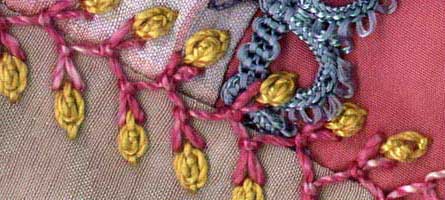
![]()
![]() Oyster stitch is a member of the chain stitch family and although it looks complex is not difficult to work.
Oyster stitch is a member of the chain stitch family and although it looks complex is not difficult to work.
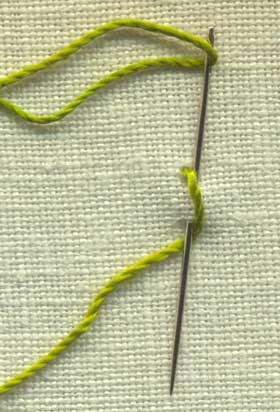
You start Oyster stitch with a single Rosette chain stitch. As a variation of twisted chain stitch you commence by bringing the thread to the front of the fabric, insert the needle, take a small stitch and wrap the needle as you would a twisted chain.
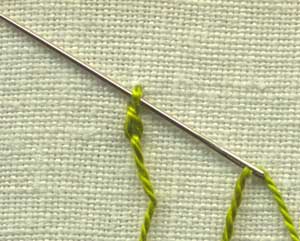
Take the needle through the fabric and pull until the loop lies flat but not tight on the fabric. Pass the needle under the right-hand top thread above the loop that has formed. Slide the needle through without picking up the foundation fabric. At this stage you have created a single Rosette chain stitch.
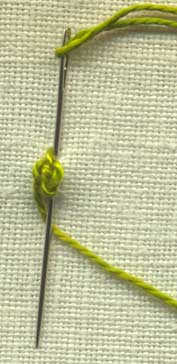
To turn it into Oyster stitch, insert the needle at the top and slide it under the knot, so that the needle exists the cloth at the base of he knot.
Loop the thread under the needle and pull the needle through.
Making a small tie stitch take the needle to the back of the fabric. You have just made a chain stitch around the first Rosette chain.
You can use this stitch as you would a detached chain stitch.
It can be used as buds in floral motifs, or worked in a circle with the stitches pointing outwards to create flowers.
If you want to use oyster stitch in a line instead of using a small tie stitch as the last step move to creating the next twisted chain stitch as the base for the first knot.
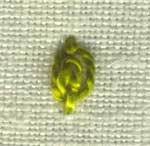 Oyster stitch can also be used in combination with other stitches such as fly stitch or spaced at the spines of feather stitch.
Oyster stitch can also be used in combination with other stitches such as fly stitch or spaced at the spines of feather stitch.
It has a highly textured appearance so sprinklings of this stitch in contemporary work produces a nobly relief particularly when worked in a thread with a good twist or a fine ribbon.
Chain stitch Family:
There are many other stitches in this group. The stitches that I have listed here in the chain stitch family are:
- Alternating barred chain stitch,
- Barred chain stitch,
- Butterfly chain,
- Detached chain,
- Feathered chain,
- Heavy Chain stitch
- Reverse Chain stitch
- Twisted chain,
- Open chain,
- Oyster Stitch,
- Rosette Chain,
- Whipped chain
- Zig Zag chain.
